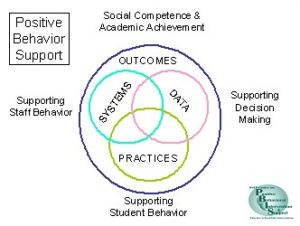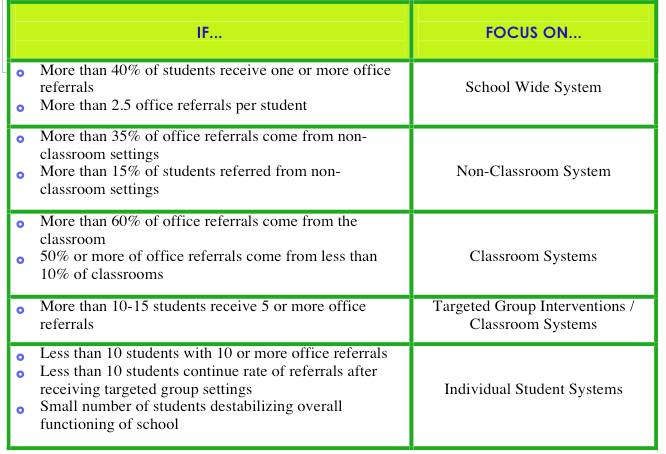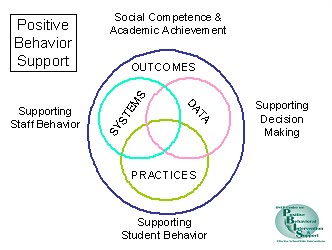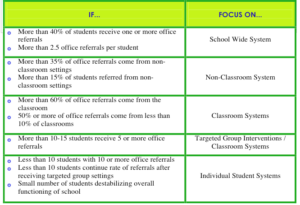Data Based Decision Making
 What:
What:
- Use data to assess current status of PBiS implementation (Self Assessment Survey)
- Use data to assess PBiS implementation fidelity (Tiered Fidelity Inventory)
- Use data to assess impact on students (Office discipline referrals, minor behavior reports, other sources of school wide data)
Why:
- Decisions are more likely to be effective and efficient when they are based on data
- The quality of decision-making depends on how well we define the problem with precision and clarity
- Data help us : Identify problems, refine problems, and ask questions that lead to solutions
- Data help place the problem in the context rather than in the students
Resources:
What
- Use data to assess current status of PBiS implementation (Self Assessment Survey)
- Use data to assess PBiS implementation fidelity (Tiered Fidelity Inventory)
- Use data to assess impact on students (Office discipline referrals, minor behavior reports, other sources of school wide data)
Why
- Decisions are more likely to be effective and efficient when they are based on data
- The quality of decision-making depends on how well we define the problem with precision and clarity
- Data help us : Identify problems, refine problems, and ask questions that lead to solutions
- Data help place the problem in the context rather than in the students
Resources



